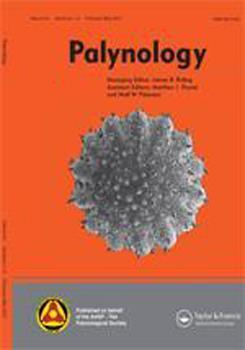The botanical heterogeneity found in the Atlantic Forest is essential for the survival of fauna in this biome, especially bees because they depend on resources (pollen and nectar) provided by plants. Pollen analysis is one the main tools employed to understand the resources used by bees and provides information that improves the identification accuracy of pollen grains. The objective of this work was to identify the main pollen types used by Apis mellifera L. bees, in a fragment of Atlantic Forest in the southern region of Bahia State. Bee pollen samples were collected from March 2012 to April 2013. The samples were acetolyzed, mounted, and analyzed based on a minimum count of 500 pollen grains. Identifications were made using the literature and the pollen reference library at the Laboratório de Micromorfologia Vegetal. Thirty-five pollen types were morphologically distinguished in the samples, which belong to 20 plant families. The family Fabaceae had the highest pollen richness (9 types), followed by Asteraceae (4), and Anacardiaceae, Myrtaceae and Poaceae (2 each). Arecaceae was present in all of the samples, although it was represented by only one pollen type, followed by Asteraceae and Myrtaceae (>50%). The statistical analysis detected some groups (cluster) in relation to month/pollen richness, but a correlation between environmental variables/pollen richness was not confirmed (p<0.05). The results show the high apicultural potential of the family Arecaceae and that other factors (such as temperature and rainfall) might influence pollen richness.
How to translate text using browser tools
8 July 2019
Pollen Foraged by Bees (Apis mellifera L.) on the Atlantic Forest of Bahia, Brazil
Rodolfo de França Alves,
Francisco de Assis Ribeiro dos Santos
ACCESS THE FULL ARTICLE
It is not available for individual sale.
This article is only available to subscribers.
It is not available for individual sale.
It is not available for individual sale.

Palynology
Vol. 43 • No. 3
July 2019
Vol. 43 • No. 3
July 2019
Apis mellifera L.
Arecaceae
FABACEAE




